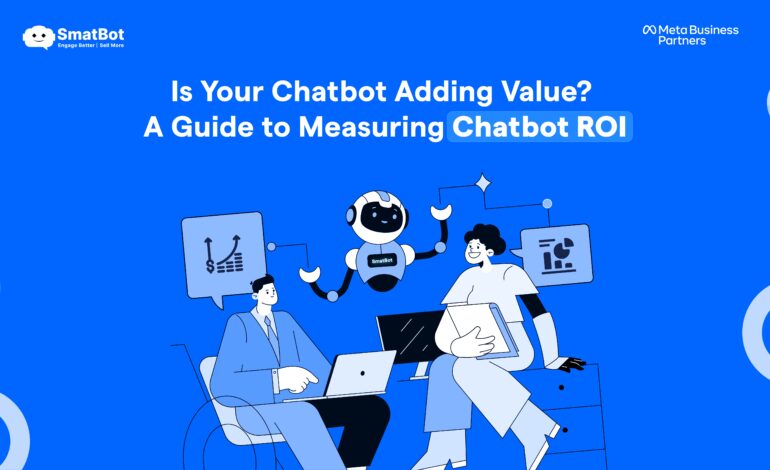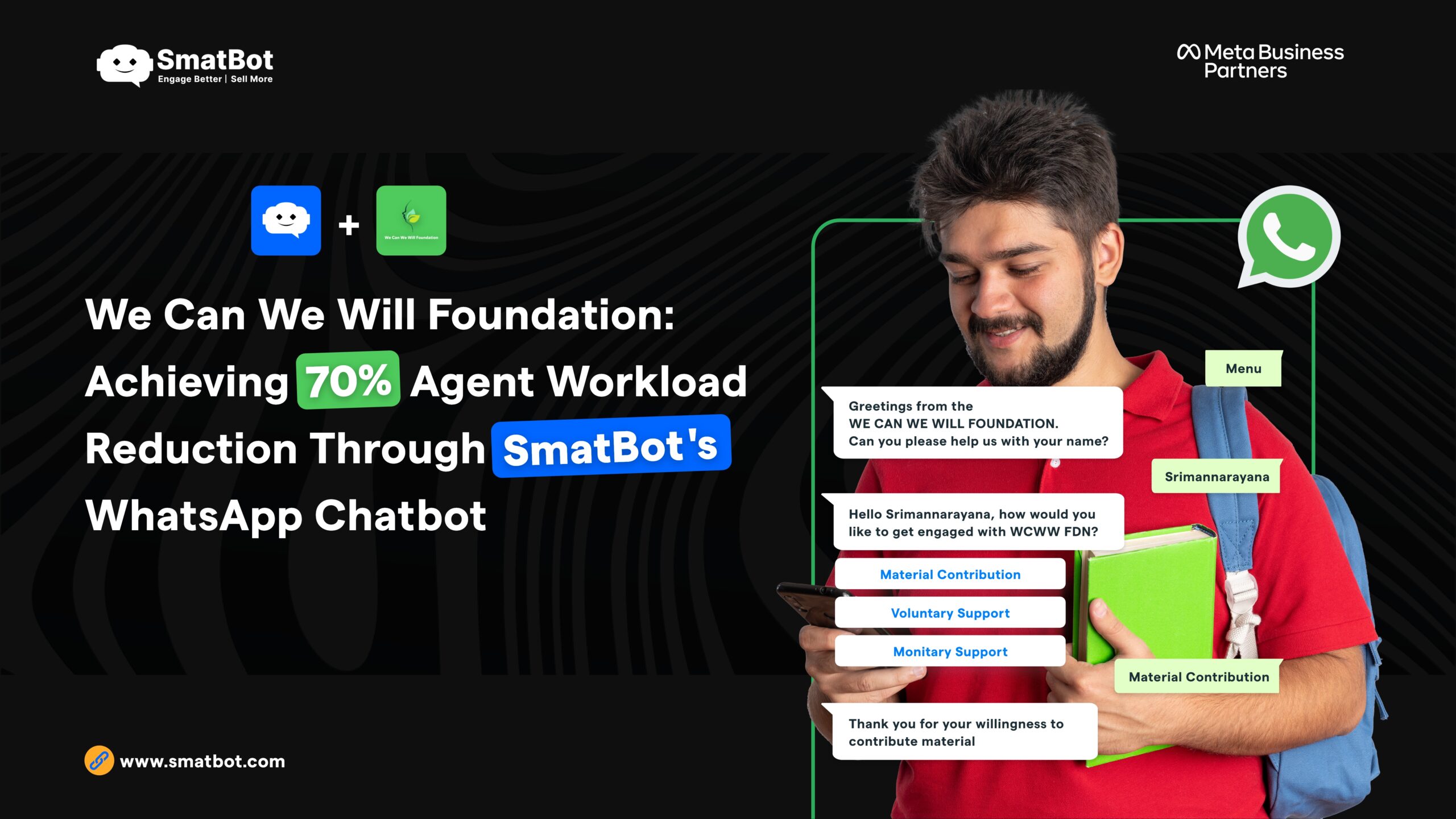Is Your Chatbot Adding Value? A Guide to Measuring Chatbot ROI
venkat karthik
- April 23, 2025
- 8 min read

Chatbots have become essential tools for all organisations worldwide. These tools can perform many important tasks, including customer service, reducing customer support employees’ work, streamlining regular processes and more.
According to the stats, 58% of businesses in the B2B sector actively utilise chatbots. The same study revealed that 42% of B2C companies use these bots.
But are your chatbots delivering the ROI you expected? In today’s automation-driven landscape, many businesses invest in chatbots but fail to effectively measure their returns. In this competitive world of business, assessing the value of every investment is more important than ever.
If you are curious to know whether your chatbot is adding value, then this article is for you. In this article, we will provide you with a step-by-step guide for calculating your chatbot ROI and allow you to make data-driven decisions and optimise your chatbot strategy.
So without further ado, let’s dive in and explore how to measure the true value of your chatbot investment.
Why Measure Chatbot Marketing ROI?
Measuring chatbot marketing ROI is essential for the following reasons:
-
- Assessing performance –
As mentioned above, calculating your chatbot’s ROI is essential for assessing its performance. Tracking KPIs like customer satisfaction, engagement and conversion rates, you can determine whether your chatbots are meeting your desired goals and delivering improved results.
-
- Finding gaps for improvement –
By analysing your chatbot’s ROI, you can also identify areas where it might not be performing well. Doing so, you can make an informed decision to refine your bot’s functionality and improve the user experience. This will ultimately boost the chatbot’s ROI.
-
- Justifying investment –
A positive chatbot ROI showcases the value your bot brings to your marketing strategy. You can use this data to justify the initial and ongoing investments in chatbot development and maintenance. It will also help you secure buy-in from stakeholders and decision-makers in your business.
Key Factors that Could Affect a Chatbot’s ROI:-
When measuring or calculating the chatbot’s ROI, you must consider a few factors that could affect it. The following are some of those factors:
-
- Your chatbot goal –
The goal of your chatbot is a significant factor that can influence its ROI. For example, if your chatbot is developed to sell products or services, it will need to generate a high sales volume to succeed.
Similarly, if your bot’s goal is to offer customer service, the success will be measured by the number of customers it helps to retain.
Always remember to keep your chatbot’s goal in mind while measuring its ROI.
-
- The platform you use to develop it –
The platform you use to design or develop your chatbots could also influence their return on investment. Quality chatbot-building platforms like SmatBot give countless features and integration options to improve your chatbot’s efficiency and quality.
In addition, these bots make it easy to manage your bots and track their performance. Optimising your chatbot over time to maximise ROI requires a thorough understanding of its performance.
-
- Customer satisfaction –
In these times, customers prefer instant response and quick resolution. You can fulfil this demand with chatbots by giving your customers an appropriate channel to receive instant assistance and self-service.
Such bots can provide your customers with multilingual support to ensure inclusivity and accessibility. Apart from this, the 24/7 accessibility of chatbots also helps you boost customer satisfaction.
Chatbots with their ability to improve customer satisfaction can also improve their ROI by boosting sales conversion, operational efficiency, and even robust relationships with customers.
-
- Chatbot quality –
The quality of your chatbot may directly impact its ROI. If your bot is hard to use or provides irrelevant responses, users will no longer engage with it. This can lead to decreased efficiency and increased costs.
To ensure chatbot success, thorough testing is crucial. Therefore, consider using an intuitive platform like SmatBot to develop and manage high-quality bots that effectively meet your business objectives.
3 Ways to Calculate Chatbots ROI:-
While there are several ways that you can use to measure and calculate your chatbot ROI, we have outlined the most effective ways to calculate it below:
-
- Identify your costs and benefits –
You should initially identify the costs associated with your chatbots, including AI development and setup costs.
On the benefit side, you must focus on the value gained from chatbots such as reduced cost, increased efficiency, lower number of junk leads flowing in and more. Remember, these benefits should align with your chatbot goals or purposes.
Also, include any revenue-generating opportunities such as upselling or cross-selling and decreasing cart abandonment. Improved customer retention also translates into long-term financial gains.
-
- Calculate using the ROI formula –
After identifying the costs and benefits of your chatbot, you should apply it to the Chatbot ROI formula mentioned below:
Chatbot ROI = (total benefits – total costs)/total cost * 100
This formula will give you a percentage that represents a rate on your investment in the chatbot.
-
- Monitor over time –
The chatbot ROI calculation is an ongoing process that requires continuous monitoring. Remember, your chatbot’s capabilities will likely evolve with more training and technological advancements, which leads to increased effectiveness and efficiency over time. Regularly reviewing its performance allows you to adjust and optimise it for maximum ROI.
By monitoring KPIs like response time, resolution rate and containment rate, you can assess whether your chatbot is delivering increasing value and determine if adjustments are needed to meet evolving customer demand or automation needs.
Regularly monitoring your chatbot ROI provides valuable insights to help you make informed decisions about future investments and ensure your chatbot continues to deliver value to your customers.
Calculate Chatbots ROI based on your Business Goals:-
As discussed above, chatbots’ goals are one of the top factors that can influence their ROI. The approach to calculating ROI varies depending on the specific goals. Take a look at the calculation methods for some common goals:
-
- Chatbot ROI for customer service –
According to statistics, 60 per cent of companies use chatbots to improve customer support service. If you are implementing these bots for the same purpose, you must first calculate the chatbot ROI. You must consider the following factors to calculate your bot’s ROI:
-
- The number of customer service interactions that your chatbot has handled. You can get these estimates by looking at historical data or conducting market research.
-
- Estimates the cost of implementing and maintaining the bot. This cost will include the costs of the software and the staff salaries who are responsible for managing your bot.
Once you have this data, you should divide the cost by the number of interactions to determine the price per query. Next, you should compare chatbot performance with your employee’s performance.
Remember, a chatbot works around the clock. In contrast, human employees typically work in shifts (8 to 9 hours). If you offer 24/7 human customer service, a customer service agent can only handle a few interactions at a time. On the other hand, bots can handle multiple queries at a time.
-
- Chatbot ROI for sold products or services –
You must calculate the potential ROI for the product you sell through these bots. Otherwise, you must pay for conversations with potential customers who haven’t purchased your product.
The following is the easy method to calculate the chatbot ROI for sold products or services:
-
- Determine the average order value for your product or service.
-
- Determine the closing rate for sale conversion.
-
- Calculate the number of conversations that your bot had in a month.
-
- Multiply those numbers together to get an estimated chatbot ROI for sold products or services per month.
If you want to compare your chatbot’s performance with your human agents’ performance, you should count the number of conversations your bot had in a month.
-
- Chatbot ROI for customer retention –
A recent study found that company leaders have claimed that chatbots have improved customer support satisfaction scores by 24 per cent.
These bots are game changers for customer retention. If you want to calculate the Chatbot ROI for customer retention, you must consider the following factors:
-
- The cost to run your bot
-
- The cost you are spending on customer support
After getting these numbers, you should compare them to see if your chatbot is saving money. Later, you must add the retention rate into the mix.
Wrapping Up
We have provided you with the best guide to calculate chatbot ROI effectively. Calculating chatbot ROI helps businesses assess their value and make informed decisions. By adopting ideal AI chatbots, companies can improve customer service, cut operating costs and automate manual tasks more efficiently.
If you’re looking for a reliable AI chatbot solution, SmatBot offers a user-friendly interface with a No-Code chatbot builder user interface and powerful AI capabilities to help you achieve your business goals. Contact us today to learn more and schedule a demo.




